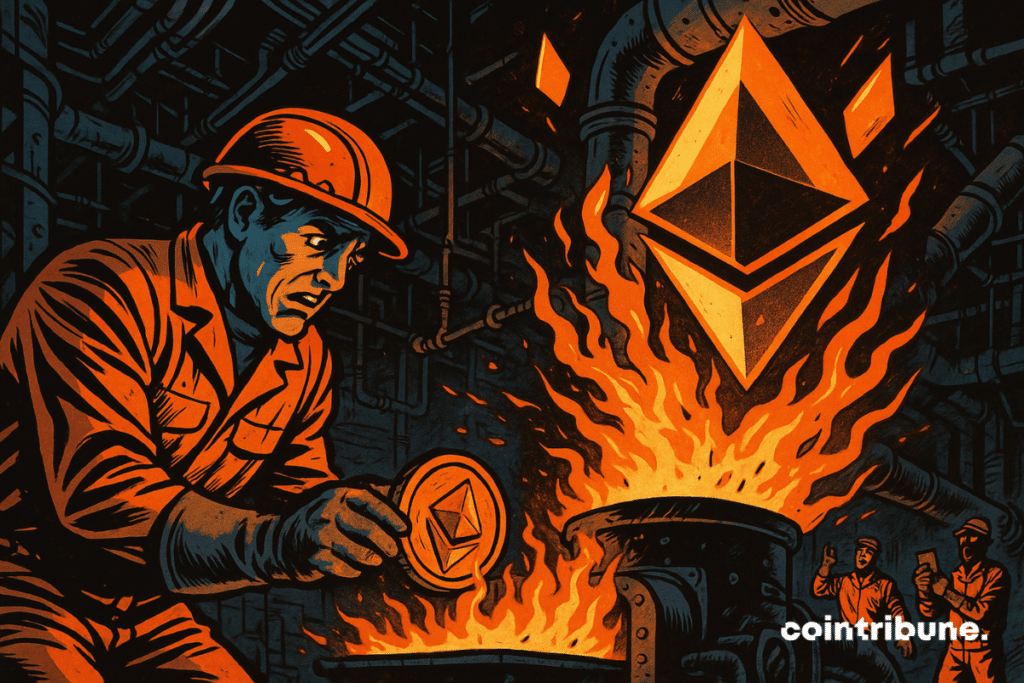$13.5B in ETH Up in Smoke—So Why Is Ethereum’s Supply Still Climbing?
Ethereum’s burn mechanism was supposed to be its deflationary magic trick. Yet here we are—$13.5 billion worth of ETH torched, and the supply keeps rising. What gives?
### The Deflation Promise vs. The Inflation Reality
Post-Merge, Ethereum flipped to proof-of-stake with a shiny new fee-burning system. Every transaction now lights a tiny fraction of ETH on fire. But the numbers don’t lie: despite the bonfire, more ETH exists today than before the upgrade.
### Validators: The Silent Inflation Machines
Here’s the dirty secret—staking rewards are minting new ETH faster than the burn can keep up. The network pays validators in fresh coins, and those payouts are bleeding into circulation like a loose faucet. So much for 'ultrasound money.'
### A Cynic’s Take
Wall Street would call this 'creative accounting.' Crypto calls it 'tokenomics.' Either way, someone’s printing while pretending not to. Stay sharp—the burn isn’t the whole story.

In Brief
- Ethereum has burned over 13.5 billion dollars in ETH since 2021 thanks to EIP-1559, without managing to stop supply growth.
- On average, 2.22 ETH are burned every minute, mainly through regular transactions, Opensea, Uniswap V2, and USDT transfers.
- Ethereum’s median annual inflation rate is 0.801%, close to Bitcoin’s, but far from the promise of a deflationary asset.
- The balance between burn and issuance strongly depends on network activity, making deflation possible but not guaranteed.
A Massive Burn Mechanism, but Limited Effect on Supply
Since the implementation of EIP-1559 on August 5, 2021, the Ethereum network has introduced a major monetary innovation: the automatic destruction of a portion of transaction fees, or “burn”, intended to reduce inflationary pressure on the ETH supply, while the crypto has just crossed 3,000 $.
In 1,438 days, this mechanism has allowed burning 4.6 million ETH, about 13.57 billion dollars at the current market value. This represents an average of 2.22 ETH burned each minute, and this figure remains strongly correlated with the level of activity on the blockchain.
ETHUSDT chart by TradingViewThe applications and uses responsible for the majority of burned ETH are well identified. Here are the main contributors, according to ultrasound.money data:
- Regular ETH transactions: 375,959 ETH burned;
- Opensea (NFT): 230,051 ETH sent to burn;
- Uniswap V2 (DEX): 227,045 ETH destroyed;
- Tether (USDT) transfers: 210,070 ETH burned.
This monetary mechanism, praised for its transparency and simplicity, nevertheless fails to compensate for the amount of newly issued ETH. The burn closely depends on the level of network usage: the more transactions there are, the greater the amount of ETH destroyed.
Conversely, during periods of lower activity, the mechanism shows its limits. The expected effect, reducing the overall supply, is therefore partially offset by issuance still exceeding total burn since 2021.
Moderate but Persistent Inflation: The Ethereum Paradox
Despite this massive destruction, the Ethereum network continues to issue more ETH than it burns. Thus, 3,695,537 ETH have been created since the London hard fork, injecting about 10.89 billion dollars of additional value into the ecosystem.
The median annual inflation rate over the period reaches 0.801%, a level nearly equivalent to that of Bitcoin today (0.809%), although significantly lower than Ethereum’s former Proof-of-Work model, which would have generated an inflation of 3.394%.
This gap between burn and monetary creation reveals a policy in unstable balance. However, the most recent weekly data show a slight inflection: over seven days, the emission rate dropped to 0.723%, with 16,745 newly created ETH.
This evolution seems linked to a decrease in network activity, and thus less pressure on the burn. Contrary to the popular idea that Ethereum is becoming “deflationary”, the reality is much more nuanced. The balance between burn and creation strongly depends on transaction volume and the network’s use by decentralized applications.
In the short term, this controlled inflation may appear as a viable compromise, guaranteeing sufficient incentives for validators while limiting dilution for holders. However, in the long term, maintaining an inflationary supply, even moderate, could pose problems if the burn does not keep pace during periods of low activity. It remains to be seen whether the protocol will adjust its economic parameters or rely on the ecosystem’s organic growth to sustainably reverse the trend.
Maximize your Cointribune experience with our "Read to Earn" program! For every article you read, earn points and access exclusive rewards. Sign up now and start earning benefits.

